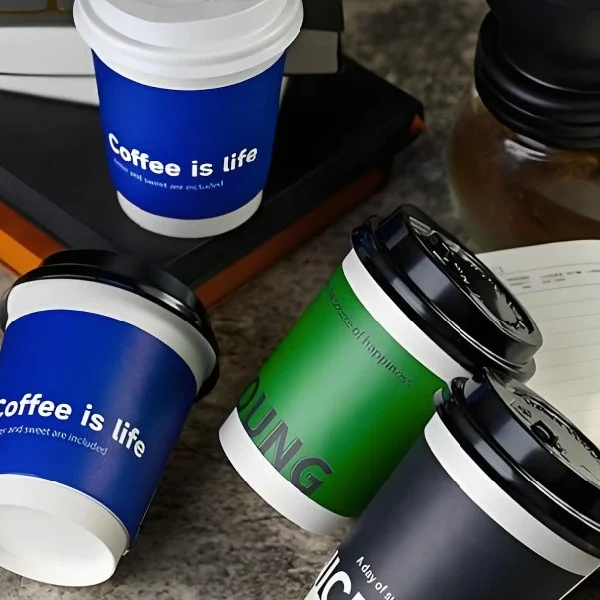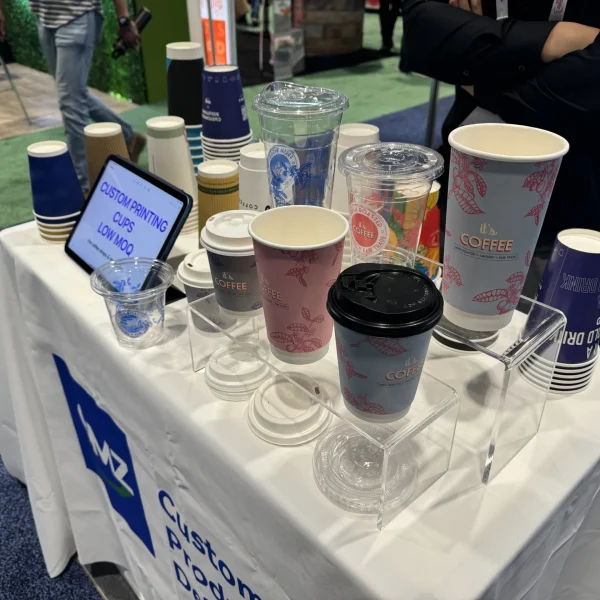When it comes to choosing between paper cups and plastic cups, many people think about which one is better for the environment. This article explores the differences in their environmental impact, considering factors like how they are made, how they break down, and how they are recycled. By understanding the lifecycle of these cups, we can make better choices that help the planet.
Key Takeaways
- Both paper and plastic cups have environmental impacts that need to be considered.
- Paper cups are biodegradable but can be hard to recycle because of their plastic lining.
- Plastic cups have a smaller carbon footprint during production but take a long time to break down.
- Consumer choices can influence the environment, so it’s important to think about waste and pollution.
Understanding the Lifecycle of Paper Cups vs Plastic Cups

When we think about the environmental impact of cups, it’s important to look at their entire lifecycle. This includes how they are made, used, and disposed of. Here’s a breakdown of the key areas:
Carbon Footprint and Energy Consumption
- Paper cups are made from trees, which require energy to process. However, they often have a lower carbon footprint compared to plastic cups during production.
- Plastic cups, made from petroleum, have a higher energy requirement in their manufacturing process.
- Both types of cups contribute to greenhouse gas emissions, but the impact varies based on production methods.
Resource Use and Waste Generation
- Paper cups use natural resources like wood and water, leading to deforestation and water depletion.
- Plastic cups, while using less water, contribute significantly to plastic waste in landfills and oceans.
- The table below summarizes the resource use and waste generation:
| Type of Cup | Resource Use | Waste Generation |
|---|---|---|
| Paper Cups | Wood, Water | Biodegradable but adds to landfill waste due to plastic lining |
| Plastic Cups | Petroleum | Non-biodegradable, contributes to long-lasting pollution |
Biodegradability and Decomposition Rates
- Paper cups decompose faster than plastic cups, typically within a few months, but their plastic lining complicates this process.
- Plastic cups can take up to 450 years to break down, creating long-term environmental issues.
- The slow decomposition of plastic leads to microplastics, which are harmful to wildlife and ecosystems.
Manufacturing Processes and Environmental Impact

Raw Materials and Production Methods
The production of paper and plastic cups starts with the extraction of raw materials. Paper cups are made from trees, while plastic cups are created from petroleum-based products. The process of turning these raw materials into usable cups involves several steps:
- Harvesting: Trees are cut down for paper, and oil is extracted for plastic.
- Processing: The raw materials are processed into pulp for paper or polymers for plastic.
- Manufacturing: The processed materials are formed into cups through various methods, such as molding for plastic and pressing for paper.
Energy Requirements and Emissions
Both types of cups require significant energy to produce. The manufacturing processes add to the greenhouse gas emissions, worsening the environmental impact. For instance, producing a single plastic cup can emit around 33 grams of CO2. In contrast, paper cup production also contributes to emissions, but the exact figures can vary based on the source of energy used.
Comparative Analysis of Manufacturing Impact
When comparing the environmental impact of paper and plastic cups, several factors come into play:
| Factor | Paper Cups | Plastic Cups |
|---|---|---|
| Raw Material Source | Trees | Petroleum |
| Energy Consumption | Moderate | High |
| CO2 Emissions per Cup | Varies (approx. 20g) | ~33g |
| Decomposition Time | 1-3 months (if recycled) | Up to 450 years |
Recycling Challenges and Opportunities

Recyclability of Paper Cups
Paper cups face significant recycling challenges due to their plastic lining. This lining makes it hard to separate the plastic from the paper, which is why many paper cups end up in landfills instead of recycling centers. Here are some key points:
- The plastic layer complicates the recycling process.
- Many recycling facilities lack the technology to handle these cups.
- As a result, most paper cups are not recycled, contributing to waste.
Recyclability of Plastic Cups
Plastic cups also present recycling issues. While they can be made from recycled materials, many still end up in landfills. Here are some facts:
- Plastic cups can take up to 450 years to decompose.
- They often contribute to pollution through microplastics.
- Recycling programs exist, but many people do not utilize them, leading to increased waste.
Innovations in Recycling Technologies
Despite these challenges, there are opportunities for improvement in recycling technologies. Some innovations include:
- Development of better sorting technologies to separate materials.
- New methods to recycle the plastic lining in paper cups.
- Increased public awareness and education on recycling practices.
By addressing these challenges and embracing new technologies, we can improve the recycling rates of both paper and plastic cups, ultimately reducing their environmental impact. The future of recycling looks promising with ongoing advancements in this field.
Comparative Environmental Footprint

Impact on Landfills and Pollution
The environmental impact of disposable cups is significant, especially when considering their long-lasting presence in landfills. Here are some key points:
- Plastic cups can take up to 450 years to decompose, contributing to long-term pollution.
- Paper cups, while biodegradable, often end up in landfills due to recycling challenges.
- Both types of cups contribute to greenhouse gas emissions during their production and disposal phases.
Water Usage and Conservation
Water usage is another critical factor in assessing the environmental footprint of cups. The following table summarizes the water consumption of paper and plastic cups:
| Cup Type | Water Usage (liters per 1,000 cups) |
|---|---|
| Paper Cups | 1,200 |
| Plastic Cups | 700 |
- Plastic cups require less water in their production compared to paper cups.
- However, the overall water footprint includes the water used in the lifecycle of the materials.
- Reducing water usage is essential for conservation efforts.
Global Warming and Climate Change Effects
The production and disposal of both paper and plastic cups contribute to climate change:
- Plastic cups emit approximately 33 grams of CO2 for each cup produced.
- Paper cups, while less carbon-intensive in production, still contribute to emissions when not recycled properly.
- The choice of cup can influence overall carbon footprints, making it essential for consumers to consider their options carefully.
While both paper and plastic cups have their environmental impacts, understanding these factors can help consumers make more informed choices. Visit our website to learn more about how you can make a difference today!
Final Thoughts on Paper and Plastic Cups
In the end, choosing between paper and plastic cups isn’t straightforward. Both types have their pros and cons when it comes to the environment. Paper cups are often seen as better because they break down faster, but they can be hard to recycle due to their plastic lining. On the other hand, plastic cups, like those made from PET, have a smaller carbon footprint during production but can take hundreds of years to decompose. Studies show that neither option is perfect, and the best choice depends on what matters most to you—whether it’s reducing waste or lowering carbon emissions.
Frequently Asked Questions
It’s hard to say which is better. Studies show that paper and plastic cups have similar environmental impacts. Paper cups are better for waste management, while plastic cups have a lower carbon footprint.
Paper cups often can’t be recycled because they have a plastic lining that makes it tough to separate the materials during recycling.
Plastic cups can take up to 450 years to break down completely, which is a big concern for pollution.
Plastic cups are usually made from materials like PET, which is a type of plastic derived from oil.
Think about factors like biodegradability, recycling options, and your own values regarding waste and pollution.












